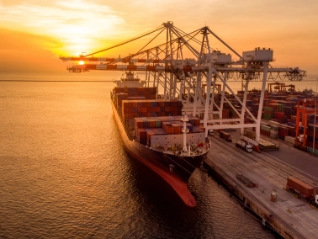
We recommend this information for you

Latest news and insights

Our latest reports

Case studies
The shock of US trade policy is unprecedented and is weighing on the global economic outlook.


Countries in the Caucasus and Central Asia need deeper reforms and investment to make the transition to high-income status

Solid sector growth expected, but US tariffs cast a shadow
Filter by
Closer ties could boost trade and create a functioning alternative to the misfiring WTO. But without the involvement...


While the deal brings a sigh of relief, unresolved details and ambitious targets leave...

Atradius Syndicate 1864 will focus on trade credit risks, initially targeting new and existing European...

Businesses face increasing supply chain risk as geopolitical tensions, tariffs and economic incentives...

Amid economic and geopolitical volatility, ICISA highlights 2024...

Adapting customer payment risk management strategies to stay financially healthy will be key for businesses...

The Atradius Buyer Impersonations factsheet offers valuable insights and practical advice on handling buyer...
Viewing 7 out of 52
Filter by
Chemicals production growth projected to slow in 2025/2026 due to US tariffs


Trade tensions trigger higher insolvencies

US business response to shifting trade policies

Tariffs and related uncertainty causing a large negative impact

In some markets the indirect impact of tariffs could dampen higher food spending

Survey findings across the United Arab Emirates highlight mounting financial pressure on companies amid rising bad debts

Growing resilience tested by US policy shifts
Viewing 7 out of 191
Collecting debts for the technology sector



With the backing of Atradius’s resources, EnCom Polymers has been able to expand business with existing customers and go...

BVV GmbH grew internationally and recognised risks such as companies on the brink of insolvency in plenty of time to mitigate the...

Atradius Surety has enabled Vinci Construction France to expand their sources of finance beyond their...

How we are part of Continental Banden Groep B.V.'s business process, minimising risk and supporting sales

Challenge: Recover invoices from difficult cases and resource-intensive cases.
Viewing 7 out of 11
Collecting debts for the technology sector



With the backing of Atradius’s resources, EnCom Polymers has been able to expand business with existing customers and go...

BVV GmbH grew internationally and recognised risks such as companies on the brink of insolvency in plenty of time to mitigate the...

Atradius Surety has enabled Vinci Construction France to expand their sources of finance beyond their...

How we are part of Continental Banden Groep B.V.'s business process, minimising risk and supporting sales

Challenge: Recover invoices from difficult cases and resource-intensive cases.
Viewing 7 out of 11



























